How To Determine What Size Generator You Need
Generator Sizing Guide
Buying a generator is typically a significant investment for a domicile or business owner. It's likewise something most consumers don't do very often, and so there's a lot of confusion around which fuel type to employ (diesel, natural gas, propane), which brand is best (Caterpillar, Cummins, MTU, Generac, Kohler, HIPOWER), and most especially, what size generator is appropriate.
To answer that last question, your first and best option is always to consult a certified electrician to assess your specific needs. However, if you lot opt to do information technology yourself, you lot can still make an informed generator buy or rental by post-obit a few basic guidelines. We're laying those out in this guide to help you lot know how to make up one's mind what size generator you need.
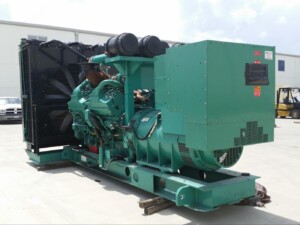
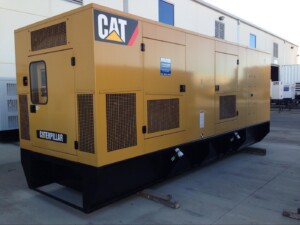
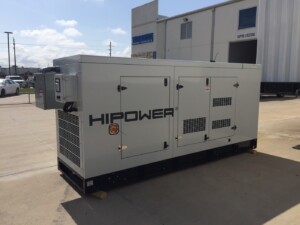
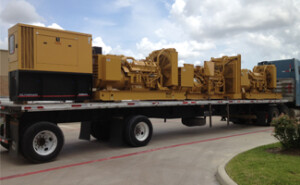
Generator Classes: Residential vs. Industrial
You should already take an idea of what class of generator you need. If you're a homeowner looking for backup or standby power, you need either a small, portable generator or a stationary standby generator. These sizes run from 2kW-2000 watts or less for a recreational unit, up to well-nigh 50kW for a whole-house standby generator. These generators typically use a single-phase current, which are sufficient to ability smaller equipment that don't require abiding, high-voltage power.
Industrial generators are available in a range of sizes, from around 20kW to well over 3MW. Larger business and industrial applications manifestly require more chapters and thus oftentimes utilise three-stage motors for college power. Part buildings, manufacturing facilities, information centers, and building complexes such as shopping malls, educational institutions, and living centers all require larger-capacity generators. This is the example whether it'due south regarding primary power supply or emergency back-upwardly power generation.
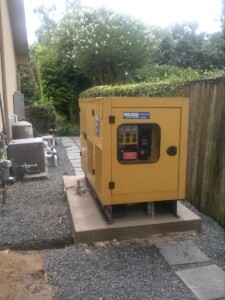
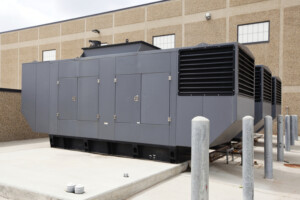
How to Size a Generator
The basic generator sizing formula goes like this:
- Grade a listing of all items that will be powered.
- Determine the starting wattage (energy needed to plow it on) and running wattage (energy needed to operate it) for each piece of equipment. These figures are typically inscribed somewhere on the equipment itself, as well equally recorded in the owner's manual.
- Calculate your full power requirement by adding up these kW or KVA figures.
Click here to use our Power Figurer
For equipment rated in amperes, yous can catechumen amps to watts with the following formula:
- For resistive loads (most common blazon): Wattage = amperes x volts
- For reactive loads: Wattage = amperes 10 volts x load factor
Load gene is the ratio of your electric energy utilisation in kilowatt-hours to your tiptop need in kilowatts. You tin can calculate it past consulting your utility nib for data and using it in the following formula:
- Total kWh for the previous calendar month / (your peak need for the period 10 thirty days x 24 hours)
Even if you lose the manual, you should be able to find wattage details online. However, if you can't determine a piece of equipment's power draw figures, yous can use a ballpark number. For example, these are the starting and running figures for some mutual tools and electronics:
| Apparatus | Starting Load (W) | Running Load (W) |
|---|---|---|
| Air compressor | 4000 | 2000 |
| Disc grinder | 4000 | 2000 |
| Router | 1500 | 600 |
| Electric chainsaw | 2400 | 1200 |
| Table saw | 4500 | 1800 |
| Water heater | 4500 | 4500 |
| Laptop | 250 | 250 |
| Printer | 500 | 500 |
| Air conditioner (10k BTU) | 2200 | 1500 |
| Dishwasher | 1450 | 1400 |
| LCD Tv set (55") | 230 | 230 |
Once you know the estimated wattage needed, the generator size is easier to cull. Whatever number y'all come up with, cull a generator with a capacity that'southward ten-20% larger than your requirement . This will requite you some leeway when and if you update your equipment and end up needing more ability equally a result. It also helps you manage "de-rating," or under performance of the generator compared to its manufacturer-claimed abilities due to adverse operating weather, such equally extreme temperatures or high altitudes.

Ownership a Single Generator vs. Paralleling
If your power needs are big enough, you may wonder whether it'southward amend to become with a single, huge diesel generator, or divide the burden between two or more smaller generators. For example, instead of a 1200kW generator, you could install three 400kW generators. This is chosen paralleling, and information technology can be a nifty option in the correct circumstances. Hither's why:
#1. Greater flexibility. It'due south very probable the reason you're buying a generator at all is the boosted reliability, a hedge confronting an interrupted power supply causing a slowdown or halt to your concern's operations. With multiple generators, yous don't accept to worry if one has to be close down for maintenance. You only shift the burden to the others and keep correct on working.
With just one generator, if it has to stop, so do you.
#two. Tin be more than cost-effective. Plainly the economics volition vary widely depending on brands, new vs. used generators, prices in your geographic location, etc. But all things beingness equal, once y'all alienation a sure generator size, it becomes more economic to parallel than utilize a single unit. Specifically, once yous go over the sizes of gas or diesel engines mass-produced for use in cars, equally well, those engines are harder to come by and are thus more than expensive. And the engine comprises more one-half the toll of a generator.
The threshold for diesel engines is 600kW and for gas engines it's 150kW.
#3. Tin can be more practical. Depending on your physical space, it may exist easier to fit two or three parallel generators into a room than one oversized unit. Amongst large commercial generators, smaller capacities tin can mean the difference in 25 or more square feet per unit.
#four. Easier on the generators. Load sharing among two or more generators tin extend the life of each generator and avoid the risk of overburdening a single unit. For continuous usage, loads upwards to 80% generator chapters are ideal.
Need Help Sizing Your Generator?
WPP Is Here to Assist!
- WPP has the engineering and technical expertise to properly size and custom packet the right power solution to fit you unique applications.
- For Commercial, Industrial, Municipal, Marine and Oil & Gas applications.
- Improve the reliability of your power, increase the life span of your equipment, and lower your maintenance costs.
Get Help Sizing Your Generator

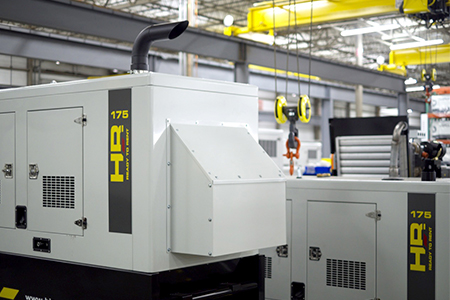
Generator Sizing and Fuel Consumption
In the same way a 3500-level truck uses more than fuel than a 1500, larger generators consume fuel faster than smaller units. This is important to recollect when "running the numbers" on what a new or used generator may toll. Non only exercise you lot accept to refuel larger generators more oftentimes, it may exist necessary to shop actress fuel on-site, precipitating the need for additional storage tanks.
For this reason, when it comes to residential generators, Consumer Reports recommends getting the smallest portable or home standby generator that meets your needs to limit the amount of fuel you have to shop to run it.
For industrial-strength generators, consult our approximate diesel fuel consumption chart to guess how much fuel you'll burn in a particular generator size operated at either a quarter-, one-half-, three-quarter, or full load.
Why It's Crucial to Choose the Correct Generator Size
Information technology may be tempting to skimp on the size of your generator, especially when doing so might save yous a couple thousand dollars. Nonetheless, selecting a generator that'due south as well small for your applications is a recipe for disaster. Not but tin you harm the appliances and devices pulling ability from the generator, you tin can harm the generator itself.
Here are some more than benefits of erring on the side of a generator that'southward besides powerful, every bit opposed to too weak:
- Increased usable life of the generator
- Consistent product operation
- Limited incidence of chapters overloads
- Limited incidence of unexpected arrangement failures
- Reduced likelihood of nugget damage
- Increased personnel safe
- Decreased risk of overheating and electric fires
- Reduction in frequency and cost of maintenance
- Increased ease and speed of maintenance
How To Determine What Size Generator You Need,
Source: https://www.wpowerproducts.com/news/generator-sizing-guide/
Posted by: eastonboung1938.blogspot.com


0 Response to "How To Determine What Size Generator You Need"
Post a Comment